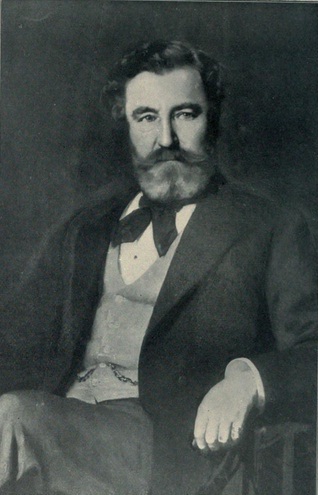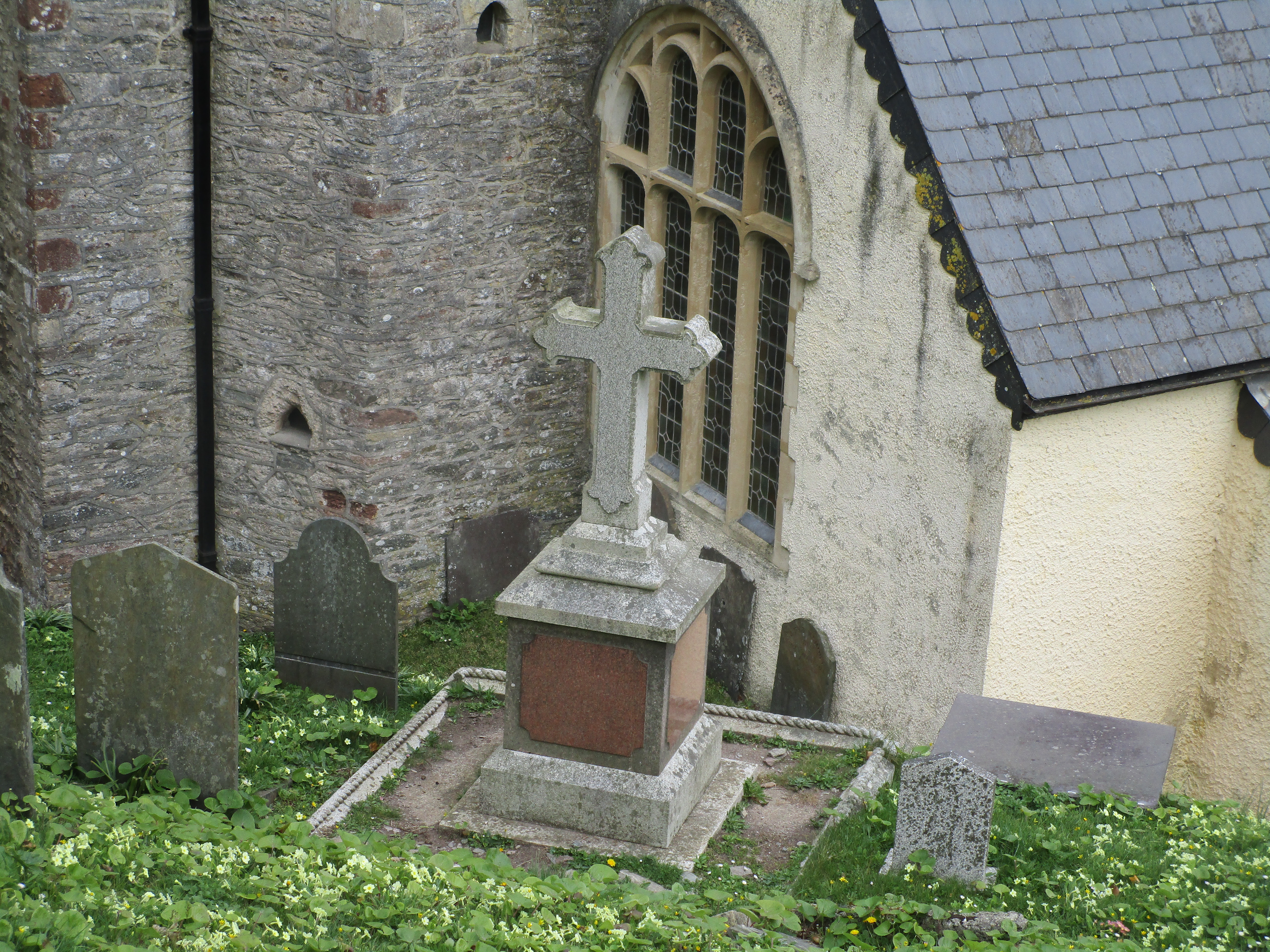Sir James Douglass
 Sir James Nicholas Douglass, FRS, (16 October 1826 – 19 June 1898),
was an English civil engineer, a prolific lighthouse builder and
designer, most famous for the design and construction of the fourth
Eddystone Lighthouse, for which he was knighted.
Sir James Nicholas Douglass, FRS, (16 October 1826 – 19 June 1898),
was an English civil engineer, a prolific lighthouse builder and
designer, most famous for the design and construction of the fourth
Eddystone Lighthouse, for which he was knighted.
James
Nicholas Douglass was born in Bow, London, in 1826, the eldest son
of Nicholas
Douglass, also a civil engineer, from a 'respected
Northumbrian family'. After serving an
apprenticeship with the Hunter and English company, he joined the
engineering department of Trinity House, the United Kingdom's
lighthouse authority.
Along with his brother
William, James
worked as an assistant to his father during the construction of
James Walker's Bishop Rock Lighthouse, earning the nickname 'Cap'n
Jim' during the process. After a brief period working for the
Newcastle carriage builders R J & R Laycock, he returned in 1854 to
assist in the lighthouse's final completion and to marry his fiancee
Mary Tregarthen. Trinity House then engaged him as Resident Engineer
to design the Smalls Lighthouse off the coast of Pembrokeshire, his
first solo project.
Douglass based his plans on the proven
design of John Smeaton for the third Eddystone lighthouse, which had
used dovetailed granite blocks for strength. Douglass sourced his
granite from the De Lank Quarries near Bodmin, Cornwall, and had it
shipped to Solva on the Welsh coast where it was dressed. The Smalls
light was completed in 1861, at a cost of £50,125, and in a
record-breaking time of two years. Douglass immediately went on to
supervise the construction of the Wolf Rock Lighthouse, designed by
James Walker, and was appointed as Engineer-in-Chief of Trinity
House in 1862.
Douglass's work on the Smalls light was a
great success and he went on to build some twenty lighthouses for
Trinity House, including some wave-swept towers which remain major
engineering achievements, such as the Longships Lighthouse off
Land's End. Douglass's designs were also used in Sri Lanka. His
brother William became the Engineer-in-Chief to the Commissioners of
Irish Lights in 1878, serving in the post until 1900.
The
crowning achievement of James Douglass's career was the construction
of the fourth Eddystone Lighthouse. Douglass was engaged to build a
replacement for Smeaton's tower in 1877, and the new lighthouse was
completed in 1882, the project being finished both without loss of
life or serious injury and £18,745 under budget. Douglass received a
knighthood shortly afterwards for his services to engineering. He
also carried out work on improving illumination using oil and gas
burners and electricity, though in this capacity he was involved a
bitter public dispute in 1883 with scientist John Tyndall and
inventor John Richardson Wigham, in which the latter accused
Douglass of copying elements of his rival gas illumination system (Wigham
eventually received £2500 from the Board of Trade for infringement
of his patent).
In 1887 Douglass was elected a Fellow of the
Royal Society. He retired in 1892, being succeeded as
Engineer-in-Chief by Thomas Matthews, and died in 1898 at his home
on the Isle of Wight. His youngest son Alfred also trained as a
lighthouse engineer. His eldest surviving son was
William Tregarthen Douglass, who
gained a considerable reputation as a civil engineer in the
construction of lighthouses.
Examples of Douglass's designs
Souter Lighthouse
Eddystone Lighthouse
Bishop Rock
Lighthouse (a rebuild of Walker's design)
Bow Creek Lighthouse at
Trinity Buoy Wharf, London
The fourth Eddystone Lighthouse
Hartland Point Lighthouse, Devon
Great Castle Head range lights,
Milford Haven
Les Hanois Lighthouse, Guernsey
Longships
Lighthouse
Smalls Lighthouse
Souter Lighthouse, Tyne and Wear
Southwold Lighthouse, Suffolk
Sir James Douglass appears to have been buried in two places.

|
| Memorial at St Petrox Church |
The first instance is an inscription on a slate tablet placed in
the cemetery of Bonchurch Old Church, Isle of Wight - 'In this
churchyard lies buried Sir James Nicholas Douglass FRS, Lighthouse
builder 1826 - 1898. He was re-interned Aug 1913 St. Petrox, Dartmouth'
The second instance is a grave is in the church yard of St. Petrox
Church, Dartmouth, Devon. The church east facing side of the
monument reads :-
'Sacred to the memory of James Nicholas
Douglass, Knight, F.R.S. Late engineer in Chief to The Honourable
Corporation of Trinity House.'
The reverse town west side of the
monument reads :-
'Walk as he walked in faith and righteousness;
Strive as he strove the weak and poor to aid;
Seek not
thyself but other men to bless;
So win like him a wreath that
will not fade.'
A commemorative table in the church reads :-
In proud memory of Sir James Nicholas Douglass, KT, FRS. Died
June 19th 1898 age 71.
And of Mary, his wife, died June 22nd
1922 aged 92.
Also of their three beloved grandsons who fell in
the Great War .
Percy Cuthbert Douglass Douglass; FLT. Commdr.
RN. Died December 10th 1917 at Salonica aged 31.
William
Douglass James, Lieut. RGA. Died September 26th 1915 at Loos age 23.
Douglass Charles James, 2nd Lieut S.Staff Reg. Died September
30th 1915 at Loos age 20.
Note:
The place of birth in this article is at odds with the above:
James Nicholas Douglass was born at Stella House, Penzance, in 1826,
and died at Stella House, Bonchurch, Isle of Wight, on July 19th
1898. It therefore seems reasonable to suppose that it was he who
gave the name of 'Stella House' to 11 College Road, (?Dulwich) which in 1877
(when it was one of the very few freehold properties on the estate)
was purchased by W. T. Douglass "for the use of J. N. Douglass". The
association of the word 'stella' (Latin for 'star') with Douglass is
entirely appropriate, as he devoted his working life to creating
artificial suns as navigational and safety aids for sailors - in
other words, lighthouses. The inventor of the 'Douglass Burner', he
was the designer and engineer in charge of construction for the
replacement for the Eddystone Lighthouse, for which work he was
knighted in 1882. At various times he had been resident engineer on
the Bishop Rock, Smalls, and Wolf Rock Light-houses off the
south-west coast of England, and then held the post of
Engineer-in-Chief to the Trinity House until his retirement in 1892.
As well as being a Fellow of the Royal Society, Douglass became
an Estates Governor and a Governor of Dulwich College, to which he
sent two of his five sons. One of these was William Tregarthen
Douglass (the purchaser of Stella House in 1877), who was himself a
distinguished engineer, the author of several books on the subject,
and Consulting Engineer to various public boards.
_douglas%20(james%20eddy%20stone%20lighthouse.jpg) |
douglas%20(james%20eddy%20stone%20lighthouse)2.jpg) |
 |
The former Mary Tregarthen, who became
Lady Mary Douglass born 2 May 1832,
St Mary's, Isles Of
Scilly, Cornwall, England |
Reverse of photograph |
|
Notes:
1. The story is told that
Mary's father, Captain James Tregarthen, a shipowner, was
also the owner of the first hotel on Scilly. Guests could
only leave the island and hotel when the 'Little Western'
was running - and sometimes it did not run..!
|
See also:
Douglass Brothers Limited, Globe Iron Works, Blaydon

Any contributions to this item will be
gratefully accepted
Errors and Omissions
|
|
The Forum
|
|
What's new?
|
|
We are looking for your help to improve the accuracy of The Douglas
Archives.
If you spot errors, or omissions, then
please do let us know
Contributions
Many articles are stubs which would benefit from re-writing.
Can you help?
Copyright
You are not authorized to add this page or any images from this page
to Ancestry.com (or its subsidiaries) or other fee-paying sites
without our express permission and then, if given, only by including
our copyright and a URL link to the web site.
|
|
If you have met a brick wall
with your research, then posting a notice in the Douglas Archives
Forum may be the answer. Or, it may help you find the answer!
You may also be able to help others answer their queries.
Visit the
Douglas Archives Forum.
2 Minute Survey
To provide feedback on the website, please take a couple of
minutes to complete our
survey.
|
|
We try to keep everyone up to date with new entries, via our
What's New section on the
home page.
We also use
the Community
Network to keep researchers abreast of developments in the
Douglas Archives.
Help with costs
Maintaining the three sections of the site has its costs. Any
contribution the defray them is very welcome
Donate
Newsletter
If you would like to receive a very occasional newsletter -
Sign up!
|
|
|
|
|
|
|
|


